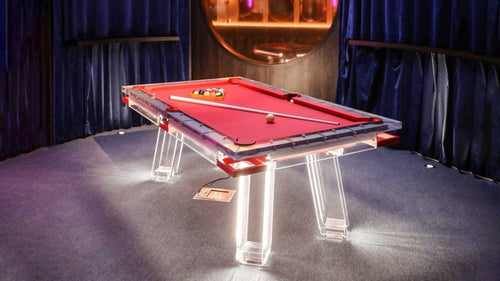Enjoy our modern designs
Antique chairs are more than just functional furniture; they are gateways into history, craftsmanship, and cultural evolution. Owning a well-chosen antique chair can add depth, character, and sophistication to any interior. Yet, for newcomers, determining a chair’s true age, provenance, and worth can seem daunting. This guide demystifies the process, helping you confidently identify, date, and value antique chairs—so you can make informed decisions, appreciate the artistry of the past, and even discover a hidden gem or two.
Table of Contents
- Why Antique Chairs Are Worth Your Attention
- How to Identify Antique Chairs
- How to Date Antique Chairs
- How to Value Antique Chairs
- Recognizing Popular Antique Chair Styles
- Famous Antique Chair Designers & Influences
- Practical Tips for Identifying and Dating Chairs
- Our Valuation Guide: Key Factors to Consider
- Conclusion
Why Antique Chairs Are Worth Your Attention
Antique chairs, spanning centuries of changing tastes and technologies, bring unmistakable character to interiors. They can:
- Introduce historical depth and narrative to your home.
- Showcase unique craftsmanship that predates mass-production methods.
- Serve as conversation pieces, reflecting your appreciation for art, culture, and design.
In short, antique chairs bridge the gap between past and present, offering both aesthetic charm and cultural resonance.
How to Identify Antique Chairs
Identifying an antique chair starts with understanding its structural and stylistic cues:
- Examine Construction: Hand-carved joints, uneven surfaces, and subtle asymmetries often signal pre-industrial craftsmanship.
- Look for Materials & Finish: Certain woods (oak, mahogany, walnut) and traditional stuffing materials (horsehair, hay) can suggest specific eras.
- Check for Markings: Stamps, labels, or burned-in maker’s marks on the underside or back can reveal the manufacturer and approximate age.
Even small details—like the type of screws or upholstery techniques—can help you identify whether a piece is genuinely antique or a later reproduction.
How to Date Antique Chairs
Dating antique chairs involves correlating design traits with known historical periods:
- Stylistic Eras: Recognize hallmark elements of Renaissance, Baroque, Rococo, Neoclassical, Victorian, Arts & Crafts, and Mid-Century designs.
- Joinery & Hardware: Hand-cut dovetail joints or early nails suggest older pieces, while machine-made dovetails and standardized hardware indicate 19th- to 20th-century mass production.
- Materials & Imports: Exotic woods or specific upholstery fabrics can anchor a chair to a certain region and time when those materials were in vogue.
By cross-referencing style, construction methods, and materials, you can narrow down a chair’s origin and era with surprising accuracy.
How to Value Antique Chairs
Valuing an antique chair involves more than just age. Consider:
- Condition: Intact original finishes, stable joints, and minimal restorations often command higher prices.
- Rarity & Demand: Some designs or maker’s marks are highly sought after, boosting the chair’s worth.
- Provenance: A documented history or notable previous owner can significantly increase value.
Consulting a reputable antique dealer or appraiser is often the best way to get an accurate valuation, especially for rare or high-value pieces.
Recognizing Popular Antique Chair Styles
Understanding common styles helps you date and identify your chair quickly:
- Windsor Chairs: Hooped backs and multiple spindles emerged in 18th-century England and America.
- Queen Anne & Chippendale: Elegant curves, ball-and-claw feet, and rich mahogany define these iconic 18th-century English designs.
- Sheraton & Hepplewhite: Late 18th-century neoclassical influences, featuring slender, tapered legs and delicate inlays.
- Arts & Crafts & Mission-Style: Early 20th-century designs emphasizing simple lines, sturdy oak construction, and honest craftsmanship.
- Rococo Revival & Victorian Chairs: 19th-century opulence, intricate carvings, and plush upholstery.
Famous Antique Chair Designers & Influences
Some makers and designers defined entire eras:
- Thomas Chippendale: Known for blending Rococo, Gothic, and Chinese motifs, producing chairs prized for their craftsmanship and detail.
- George Hepplewhite & Thomas Sheraton: Celebrated for elegant, neoclassical lines that influenced late 18th-century English furniture.
- William Morris (Arts & Crafts): Promoted honest, handcrafted pieces emphasizing natural materials and simplicity.
Identifying a famous maker’s style or mark can dramatically increase both aesthetic appreciation and monetary value.
Practical Tips for Identifying and Dating Chairs
To sharpen your eye:
- Study Reference Materials: Antique furniture guides, museum collections, and online databases provide benchmarks.
- Check Undersides & Backs: Maker’s marks, labels, or even pencil inscriptions can offer direct clues.
- Inspect Joinery: Hand-cut dovetails, pegs, and mortise-and-tenon joints often indicate older production methods.
- Consult Professionals: Antique dealers and appraisers offer expertise and authentication services.
Our Valuation Guide: Key Factors to Consider
Valuing antique chairs hinges on multiple variables:
- Age & Historical Context: Older pieces with notable historical importance often command higher prices.
- Condition & Originality: Authentic finishes, lack of heavy restoration, and intact original upholstery add value.
- Rarity & Demand: Limited production runs, renowned makers, or unusual designs are more expensive.
- Provenance: A documented lineage or association with notable figures or estates enhances worth.
- Quality of Materials: Fine woods, intricate marquetry, and delicate carvings translate into higher values.
Weighing these factors carefully—alongside expert opinions—ensures you pay or charge a fair price.
Conclusion
Antique chairs are living pieces of history—tokens of evolving tastes, technologies, and social customs. By learning how to identify construction methods, decipher stylistic influences, pinpoint historical eras, and appreciate the materials involved, you gain the tools to recognize genuine antiques. Understanding valuation factors protects you as a buyer or seller and enriches your connection with these timeless artifacts.
As you refine your eye, explore reputable dealers, attend antique fairs, and join collector communities. Over time, you’ll develop both the confidence and expertise to uncover chairs that not only enhance your interior but tell a compelling story of craftsmanship and culture passed down through generations.

















